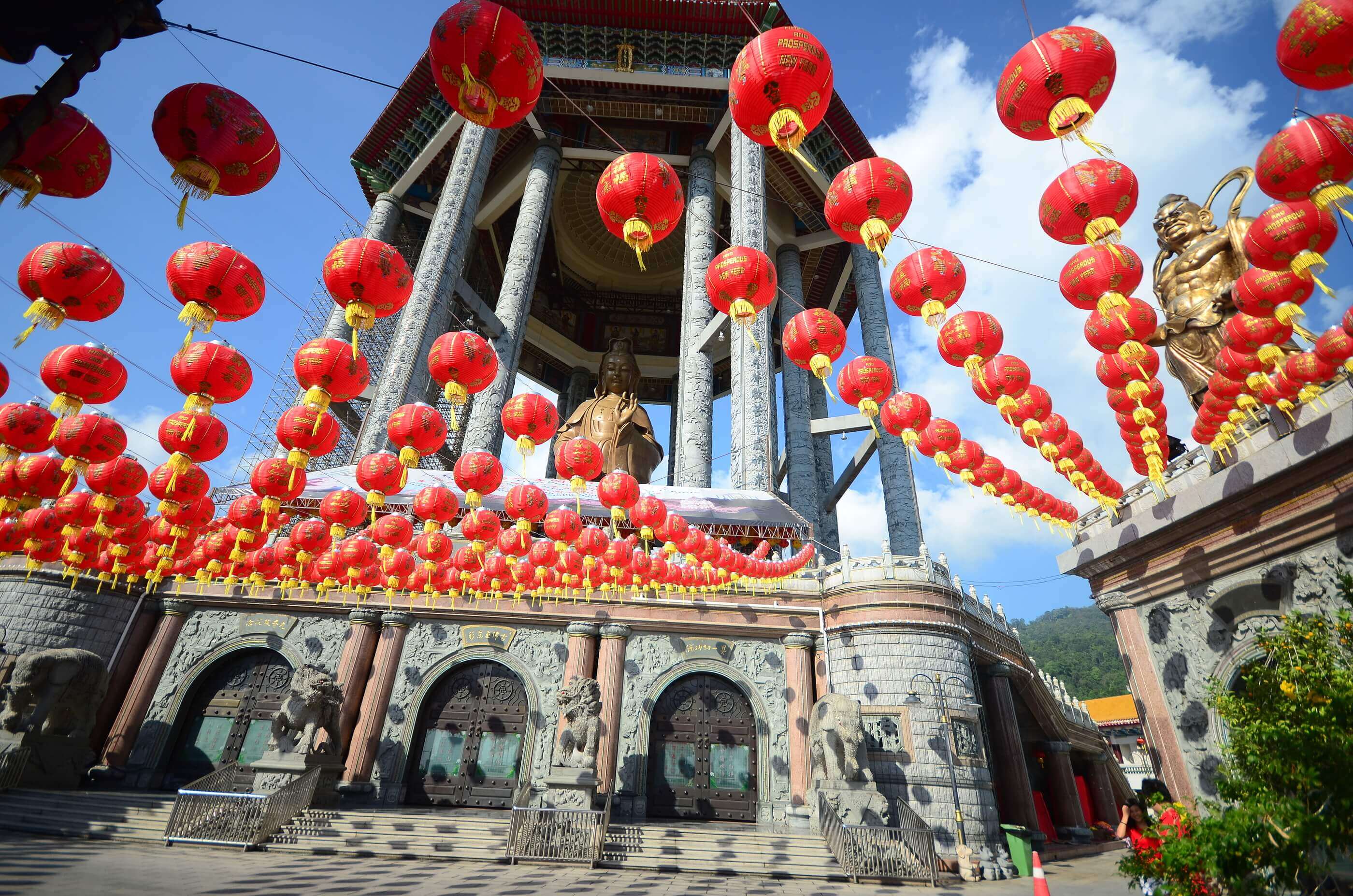It will soon be time to paint the town red for Chinese New Year (CNY). Also known as the ‘Spring Festival’, this celebration sees Chinese communities across usher out the old year and welcome the fortune and prosperity of the new one.
Celebrated globally by over two billion people (a quarter of the world’s population), it’s a time to gather and celebrate through cultural events, food, and plenty of decorations.
The date for Chinese New Year is worked out by the ‘New Moon’, which means Chinese New Year 2024 will be observed from February 10 to February 15. It’s also the year of the Wood Dragon. Chinese folklore believes if you’re born in a particular year, you will inherit some of the characteristics of that animal.
In the case of the wood dragon, it symbolises a calmer and more introverted person, who is creative, inquisitive, and willing to give into any problem. These traits could prove useful for tackling this colourful holiday in a sustainable way.
As red is the colour of luck, you will see it everywhere. From red lanterns hung on trees in the street to firecrackers wrapped in red paper intended to scare off evil spirits, this auspicious colour plays a pivotal role. But that doesn’t mean we can’t make our Lunar New Year decorations a little greener.
What decorations are used for Chinese New Year?
It’s impossible to downplay the importance of decorations to China’s most popular festival. Celebrants go wild with their decorations, but the timing of putting up CNY decorations varies. Chinese people do most of their decorating for CNY on the western New Year’s Eve, although some will leave it a week or two before bringing out the blooming flowers and paper cuttings. Along with the colour red, almost all decorations will be zodiac-specific for an authentic touch.
But did you know there’s a special meaning behind every CNY decoration? Let’s look at what each one represents.
Chinese lanterns – An iconic CNY decoration that’s hung on trees in the street and outside the doors of homes, offices, and shops to symbolise happiness. Hanging a red lantern in front of the door is also believed to drive out bad luck.
Door couplets – These red and gold banners are hung around interior and exterior doors, and bear messages of good fortune, good health, good luck, and prosperity. Traditionally written using ink and Chinese calligraphy, they denote best wishes for the coming year. Interestingly, these positive wishes for CNY are usually posted in pairs, as even numbers relate to good fortune and prosperity in Chinese culture.
Paper cuttings – The art of cutting designs out of red paper and glueing them on windows. The designs typically feature images of Chinese characters, fruits, plants, and zodiac animals representing the year. Each notion embodies a different wish, from eternal youth and fertility to honour and wealth.
CNY paintings – New Year paintings displaying legendary figures and plants are hung on doors and walls during the event. They serve both decorative purposes and symbolise New Year’s greetings.
Chinese firecrackers – Letting off firecrackers is traditional for CNY. They are a common sight outside business establishments and homes, representing happiness and festivities. By starting the year with a bang, the distinctive sound of firecrackers is believed to ward off bad luck and evil spirits.
Kumquat trees – A popular plant placed in many homes during the CNY holidays to welcome luck, prosperity, and wealth, a kumquat tree translated to Cantonese as gam gat sue. As fate would have it, the word gam is the Cantonese word for ‘gold’, while gat means ‘good luck’.
Red packets – These lucrative red packets (also known as Ang Pao) are typically used as envelopes to hold money. Bosses will sometimes gift this special New Year’s bonus to employees. It’s more common for parents and grandparents to give Ang Pao to their children and grandchildren to wish them good luck in the new year. This generosity is also reciprocated if the children and grandchildren are grown-up.
However, the most important part is wrapping the lucky cash in red. This ritual is expected to bestow more happiness and blessings on the recipients, wishing them a safe and peaceful year.

Upside-down fu characters – The Chinese characters of Fu are deliberately inverted when written on a diamond-shaped piece of red paper to suggest good fortune is pouring out of them. They are hung on or over doors at the entrances of homes and businesses.
Blooming flowers – As CNY marks the beginning of spring, many decorate their properties with blooming flowers such as orchids and peach blossoms. They symbolise the arrival of spring and wishes for a prosperous year.
Tips to keep your Chinese New Year decorations sustainable
While some traditions have faded over time, others continue to be passed on through generations. Lots of red decorations are still essential to this Chinese holiday, but respecting the environment without forgoing tradition is still possible. Read on for some top tips on how to be sustainable with your decorations this Lunar New Year.
Only buy what you need
While it’s tempting to go overboard and create a sea of red with your CNY décor, try only to buy what you need.
Think about how to make your décor evergreen. Non-zodiac animal-specific decorations are reusable for many years. Avoid decorations with adhesives, as they leave residue and damage the decorations and surfaces when you take them down. Don’t use tape to stick them up either — blue tack is your best option.
Make your own
There’s no better way to get in the festive mood than making your own paper lanterns or banners. Use recycled materials like cardboard, fabric scraps, and your favourite paper colour to add a personal touch that’s also kind to the environment. Many of these materials will be lying around your home or can be picked up from the craft store.
CNY is also showered with confetti, which is unfortunately made from plastic or unsustainable dyes. It takes years to decompose and causes harm to marine life, wildlife, and human health by leaving microplastics and other unsafe materials in the ground and waterways. Instead, why not make your own eco-friendly confetti? All you need is a hole punch and a collection of dried leaves.
E-crackers
Firecrackers and fireworks may look spectacular in our skyline, but e-crackers are a vibrant and eco-friendly substitute for lighting up your CNY celebrations. They emit the same light and sound as traditional firecrackers without releasing any chemical waste or hazardous smoke. You’ll breathe even more easily when you discover they can be charged and reused.
Greener red packets
While this incredible generosity of giving red envelopes filled with money is heartwarming, it’s also highly wasteful. Depriving our forests of more than 16,300 trees, it sees 320 million envelopes given annually, all of which can be recycled if they aren’t glued or taped shut.
Give them to your parents or bosses to reuse the following year, or get crafty and use them for bookmarks, Christmas tree decorations, or gift wrapping. Use FSC or recycled paper where possible, as it’s sourced in an environmentally-friendly way.
During this time, the red envelope craze also encourages some designated places to open recycling collection points for red envelopes.
To avoid any wastage at all, consider sending your red envelopes electronically instead. Many are already doing this through WeChat — China’s most popular communications app.
Flowers
Flowers have the power to make people happy, reduce stress, and add a pop of colour to our homes. Unfortunately, they don’t always endear themselves to the planet. For your CNY celebrations, avoid flowers wrapped in swathes of cellophane, or potted in plastic containers.
Flowers in ceramic pots can be used again and again, while nothing beats zero-waste packaging. Have a walk to your local florist and bring some seasonal stems home, all while eliminating post-consumer waste.
Happy Chinese Year
As the year of the dragon arrives, may good fortune lie ahead for you and your loved ones. But let’s not forget Mother Nature in all of this — small changes can make a big impact.
By embracing just a few of the practices we’ve suggested in this guide, we can celebrate the festive joy of the Luna New Year in a way that is sympathetic to the planet.
